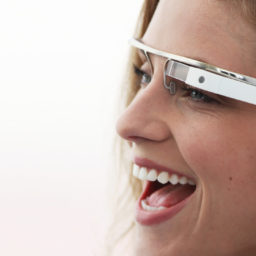Forty thousand. That’s the number of songs being added to Spotify every day. Per year, that’s nearly 15 million. With AI, we are approaching a world where we could easily create 15 million songs per day. Per hour even. What might that look like?

The music trend we can most linearly extrapolate into the AI age is that of utilitarian music: instead of putting on an album, we put on workout music playlists, jazz for cooking, coffee time Sunday, music for long drives.
Artists have become good at creating music specifically for contexts like this. It often forms a big consideration in marketing music, but for also the creation process itself. But an artist can’t be everywhere at once. AI can and will be. Meaning that for utilitarian music, artificial intelligence will have an unfair advantage: it can work directly with the listener to shape much more gratifying, functional music experiences.
This will lead to the rise of Authorless Music. Music without a specific author, besides perhaps a company or algorithm name. It may be trained by the music of thousands of artists, but for the listener it will be hard to pinpoint the origins back to all or any of those artists.
Do we want Authorless Music? Well, not necessarily. However if you track music consumption, it becomes obvious that the author of music is not important at all for certain types of music listening. Yet we crave humanity, personality, stories, context.
Those familiar with trend watching and analysis, know to keep their eyes open for counter trends. When more of our time started being spent on social platforms and music became more anonymous due to its abundance, what happened? We started going to festivals in numbers never seen before. So what counters Authorless Music?
The counter trend to Authorless Music is Authorful Music. Although there will be a middle space, for the sake of brevity I’ll contrast the two.
| Authorless Music | Authorful Music | |
| Origin | AI-created or obscure | Human-created (ish) |
| Focus | Specialised in function | Specialised in meaning |
| Relation | Little emotional involvement | Strong emotional involvement |
| Trait | Personalized | Socialized |
Authorless Music: primarily driven by AI or the listener is unable to tell whether the listed artist is a real person or an algorithm. The music is specifically targeted towards augmenting certain activities, moods, and environments. Due to its obscure origin, the listener has little emotional involvement with the creator (although I’m looking forward to the days where we can see AI-algorithms fan bases argue with each other about who’s the real King / Queen of AI pop). In many cases it will be personalised to the listener’s music taste, environment, weather, mood, etc.
Authorful Music: primarily created and / or performed by tangible people or personalities. It will be focused in shaping meaning, as it is driven by human intent which embeds meaning by default. This type of music will maintain a strong emotional link between artists and their fans, as well as among fans themselves. This music exists in a social way – even music without lyrics, such as rave music, exists in a social context and can communicate that meaning, context, and intention.
With the increasing abundance of music (15 million tracks per year!), the gateway to Authorless Music has been opened. What about Authorful? What experiences will we craft in a mature streaming landscape?
Two important directions to pay attention to:
Socialising music experiences
It’s so easy to make and manipulate music on our smartphones now. Whether it’s music as a standalone or accompanying something on Instagram or TikTok. One reason for this massive amount of music being added to streaming services is because it’s easier than ever to make music. With apps that make it easy for people to jam around with each other, we’ll see a space emerge which produces fun tools and basically treats music as communication. This happens on smartphones but is strongly complemented by the virtual reality and gaming space.
See: JAM, Jambl, Endlesss, Figure, Smule, Pacemaker.
Contextualising music experiences
There is a lot of information around music. What experiences can be created by exposing it? What happens when the listeners start to enter the space between creator and listener and find their own creative place in the music through interaction? (I previously explored this in a piece called The future of music, inspired by a cheap Vietnamese restaurant in Berlin)
Examples of this trend: lyrics annotation community Genius, classical music streaming service IDAGIO, and projects like Song Sommelier.
Special thanks to Data Natives, The Venue Berlin, and Rory Kenny of JAM for an inspiring discussion on AI music recently. You’ve helped inspire some of these thoughts.
New to MUSIC x? Subscribe to the free newsletter for regular updates about innovation in music. Thousands of music professionals around the world have gone before you.















